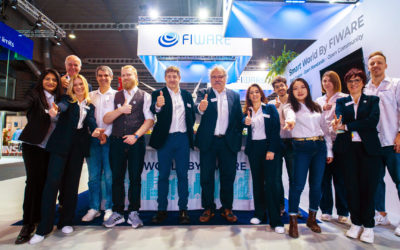Nowadays, almost everybody's life is affected by traffic (of both vehicles and people) in a number of ways. The recurrent questions; how long will it take to drive to the office; how long will it take to find a parking spot; how long will you have to wait in line at a public desk? Every day we somehow have to deal with these traffic flows, overcoming such obstacles.
Smart cities are particularly interested in traffic flows, as this information can effectively be used by local municipalities and stakeholders to make decisions and design strategies. Unfortunately, traffic monitoring usually requires complex infrastructures that are expensive and complex both to install and maintain, and this limits the diffusion of state-of-the-art traffic monitoring solutions to few subjects that can afford to buy them.
So the question was asked: would it be possible to perform wide and accurate traffic-monitoring campaigns in a cost-effective way, without all the overhead of building and maintaining a dedicated infrastructure to acquire, transmit, store and analyze data? The answer was: of course it can be done! That’s where FLOUD comes in.
FLOUD was created by Magenta srl, an SME based in Florence (Italy) which was founded in 2007 by three associates. The FLOUD project started in 2015 after the results of a previous EU co-funded project (CHEST) that demonstrated how a wide and effective traffic-monitoring campaign was possible without the need of complex and expensive infrastructures. Instead one can use a cheap sensor and the existing IT infrastructures (i.e. connectivity) of local municipalities, public offices, shops, and even smart citizens! From this point on, the FLOUD project allowed them to develop a complete platform, based on FIWARE technologies, for sensors and data management, analysis and presentation.
The purpose of FLOUD is to meet the smart cities´ needs for sustainable and minimally invasive systems that improve decision making processes based on the analysis of traffic flows. Municipalities are natural FLOUD users, but the team does not want to limit themselves to this. Since FLOUD sensors can be used to measure pedestrians flow, as well as vehicles flow, it is useful to all the subjects that are in charge of managing widely visited spaces, like shopping malls, train/bus stations, airports, supermarkets, museums, stadiums and many more. People flow estimation can be used to understand better the surrounding reality: in which place are people most interested? Where are they spending more time? How fast are people moving in public areas?
FLOUD can provide meaningful statistics that can greatly help in taking decisions on resource management, or in evaluating the effects of decisions already made. At the moment, FLOUD is actively used in 5 pilot and more than 20 production projects today. To demonstrate the flexibility of their approach, more than 30 sensors were installed without the need for additional infrastructure of any kind. Their ultimate goal is to support the development of smart environments by leveraging on existing technical and physical infrastructure to improve transport management.



